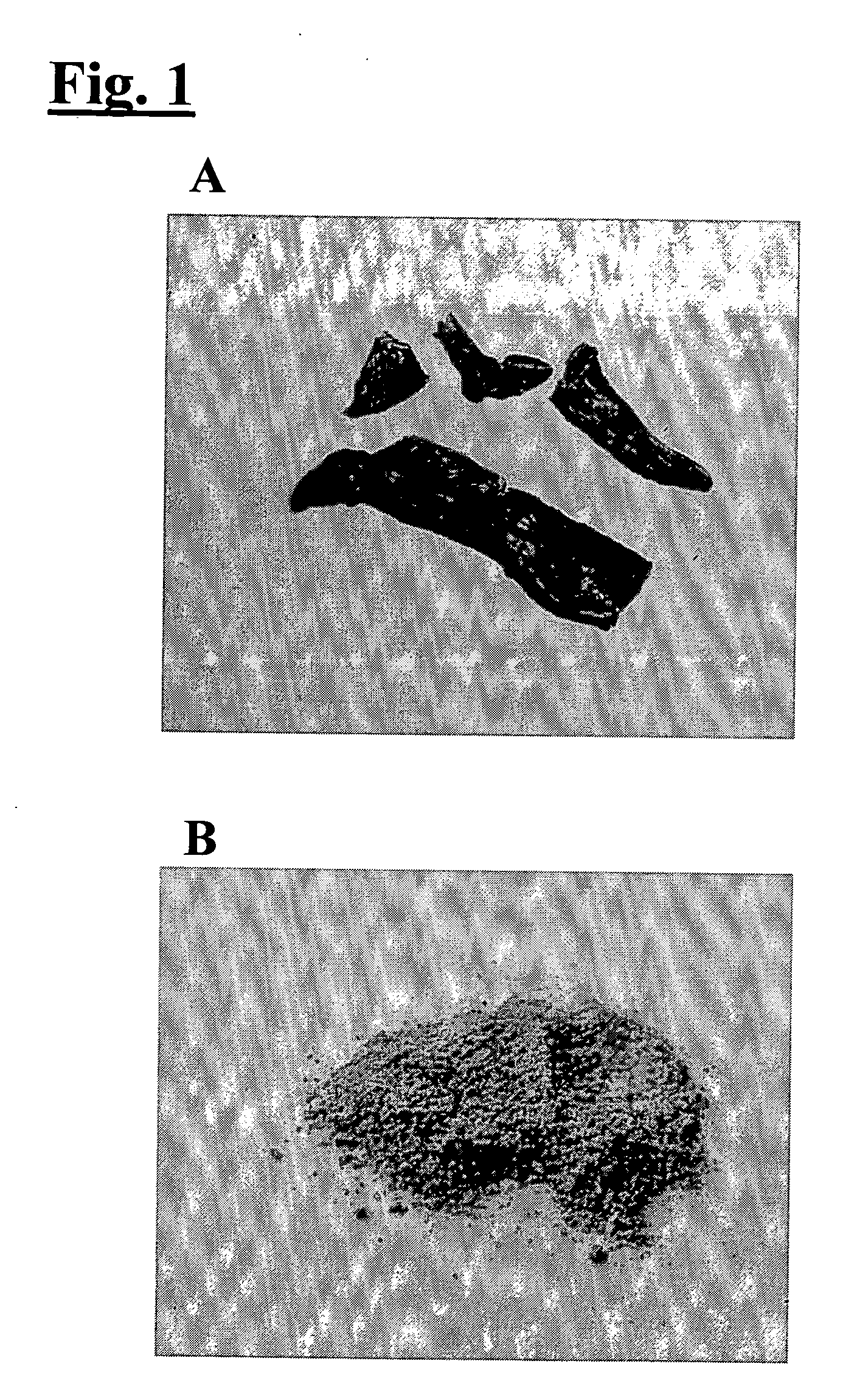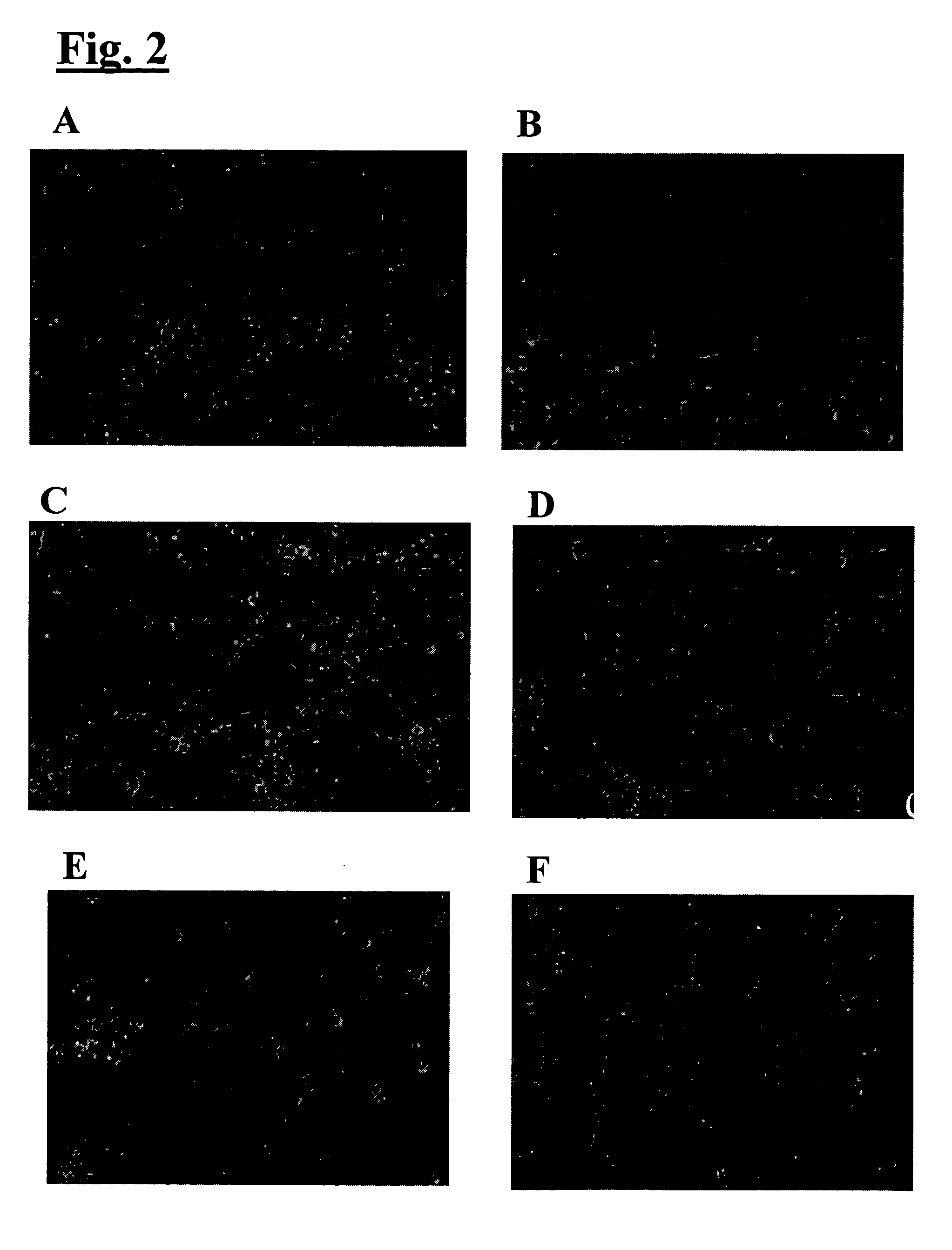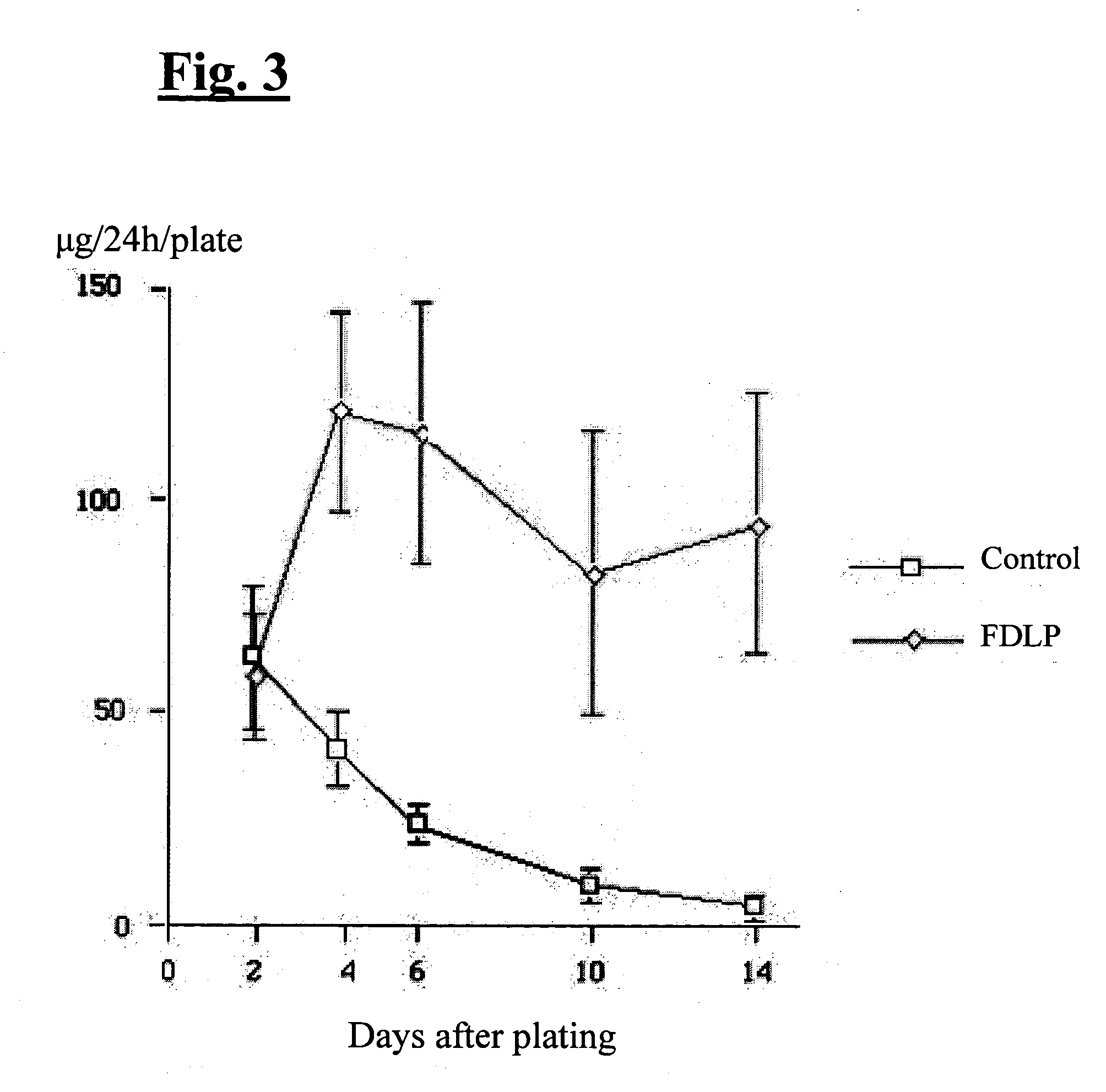Matrix derived from whole organ
a whole organ and matrix technology, applied in the field of cells culture, can solve the problems of difficult culture of hepatocytes, and achieve the effects of remarkable performance abilities, increased proliferation of hepatocytes, and functional longevity
- Summary
- Abstract
- Description
- Claims
- Application Information
AI Technical Summary
Benefits of technology
Problems solved by technology
Method used
Image
Examples
example 1
[0029] Isolation of Liver and Preparation of Freeze-Dried Liver Powder (FDLP)
[0030] Adult male Sprague-Dawley rats (200-250g) were obtained from Harlan Sprague-Dawley Inc. (Indianapolis, Ind.). Animals were housed in a climate-controlled (21° C.) room under a 12-hours light-dark cycle and were given tap water and standard laboratory rat chow (Rodent Chow 5001, Ralston Purina; St. Louis, Mo.) ad libitum. Cell harvesting was performed between 9:00 a.m. and noon under general anesthesia (isoflurane) using sterile surgical technique. This study was performed in compliance with institutional and National Research Council guidelines for the care and use of experimental animals.
[0031] The rat liver was harvested after in situ perfusion with cold physiological saline (0.9% NaCl). The harvested liver was sliced into 1-3 mm thickness and frozen in liquid nitrogen. After freezing, the liver was dried in a low pressure tank (FIG. 1a). The freeze-dried liver was subsequently broken into powder...
example 2
Hepatocyte Isolation
[0032] Hepatocytes were harvested by the Seglen in situ two-step liver perfusion method with some modifications (P.O. Seglen, “Preparation of Isolated Rat Liver Cells,”Methods Cell Biol. (Prescott, D. M., ed.) 13:29-83, Academic Press, New York (1976)). After enrichment through a PERCOLL density gradient (Pharmacia; Piscataway, N.J.), viability of the cells was always greater than 90%, as judged by trypan blue exclusion. The cells were next suspended in DMEM (Omega Scientific; Tarzana, Calif.) with 10% fetal bovine serum (FBS) (Sigma Chemical Co.; Saint Louis, Mo.).
example 3
Use of FDLP Matrix as Hepatocyte Cell Culture Substrate
[0033] Rat hepatocytes suspended in DMEM with 10% FBS were mixed with FDLP soaked in the same culture medium (1.5 mg / ml) and seeded on 60-mm non-coated tissue culture plates at densities of 4.5×105 cells / ml and placed in a humidified, 5% CO2; 95% air incubator at 37° C. Six hours after plating, the medium was replaced with DMEM enriched with 10% FBS, 20 mM HEPES, 10 mM nicotinamide, 1 mM ascorbic acid 2-phosphate, 10-7 M dexamethasone, 1 mg / ml galactose, 30 μg / ml proline, ITS mixture, 10 ng / ml epidermal growth factor (EGF) and antibiotics. The medium was replaced every 24 hours. In addition to the basal medium, 1% dimethyl sulfoxide (DMSO) was used from day four onward. Control dishes contained no FDLP and hepatocytes were cultured on 60-mm dishes coated with type I rat tail collagen (obtained from Collaborative Biomedical Products; Bedford, Mass.). Additionally, as a background, a culture plate containing only FDLP (1.5 mg / ml)...
PUM
| Property | Measurement | Unit |
|---|---|---|
| thickness | aaaaa | aaaaa |
| diameter | aaaaa | aaaaa |
| densities | aaaaa | aaaaa |
Abstract
Description
Claims
Application Information
 Login to View More
Login to View More - R&D
- Intellectual Property
- Life Sciences
- Materials
- Tech Scout
- Unparalleled Data Quality
- Higher Quality Content
- 60% Fewer Hallucinations
Browse by: Latest US Patents, China's latest patents, Technical Efficacy Thesaurus, Application Domain, Technology Topic, Popular Technical Reports.
© 2025 PatSnap. All rights reserved.Legal|Privacy policy|Modern Slavery Act Transparency Statement|Sitemap|About US| Contact US: help@patsnap.com



